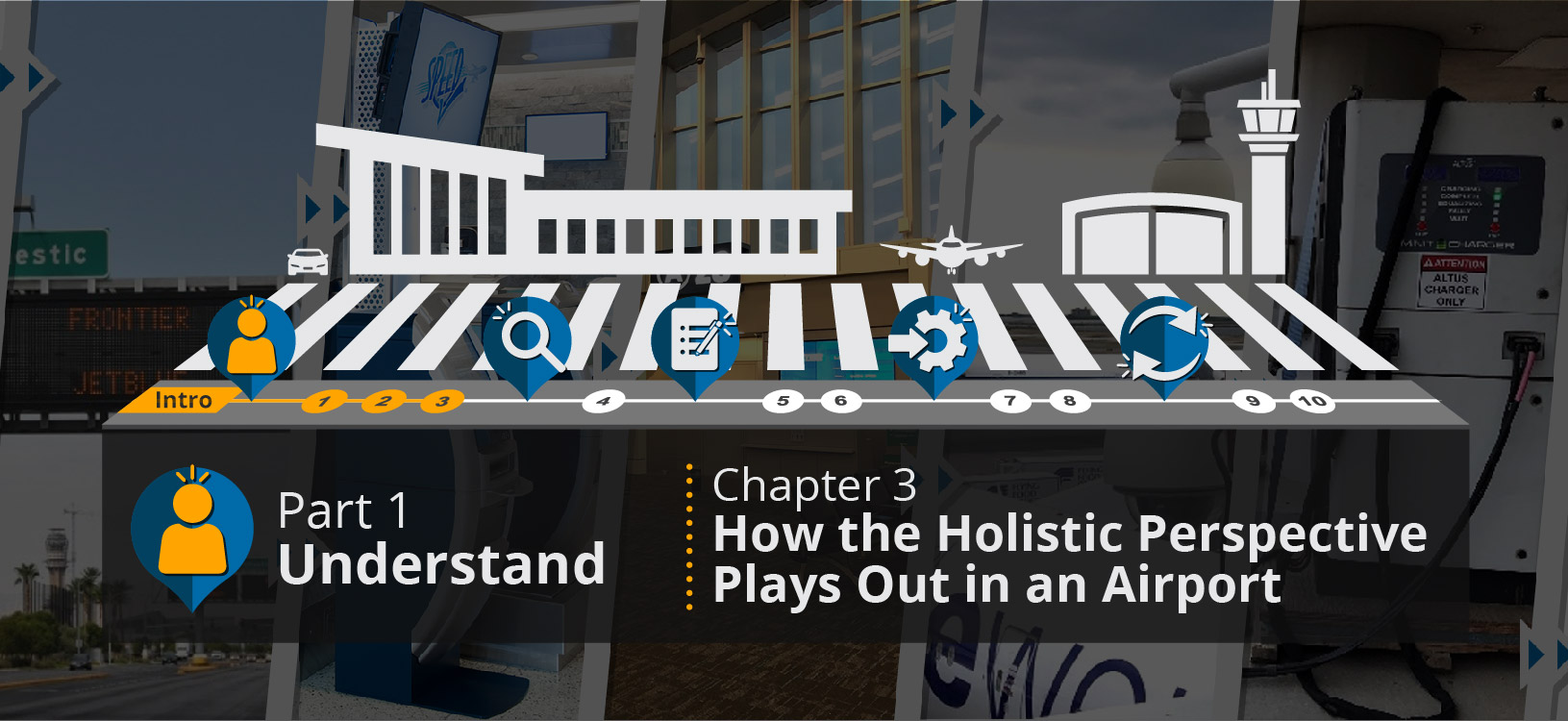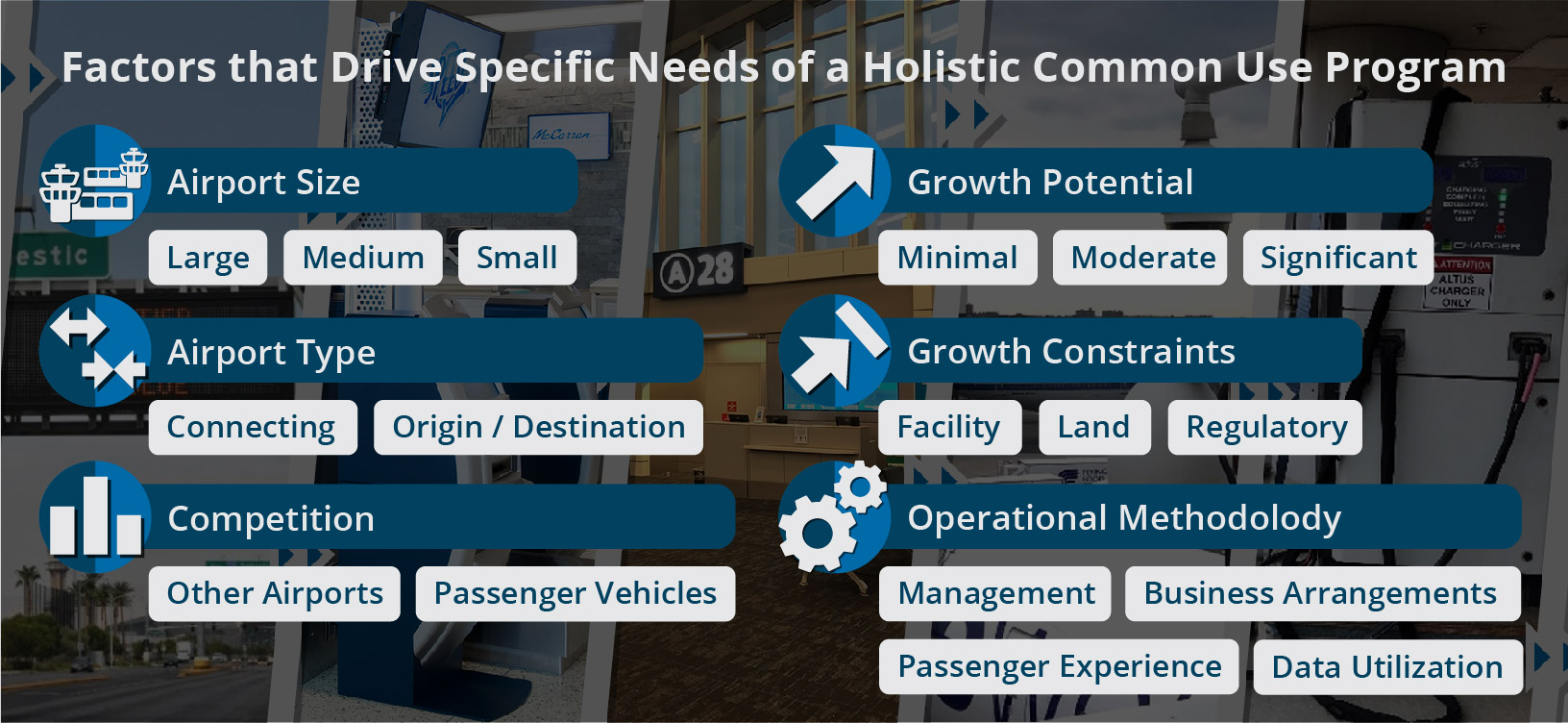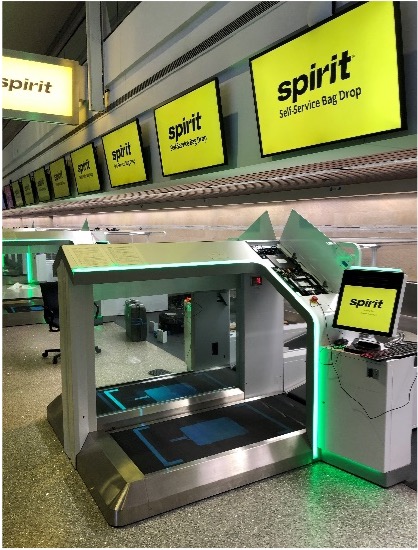
Key Factors that Drive Specific Needs of a Holistic Common Use Program
Individual airports have different needs that will provide the basis for moving in the direction of a holistic common use approach. For one airport operator, this initial step may be a shift in mindset due to a new staff member coming on board. For another, it may be the decision to begin a new major construction project. Another reason may be responding to the need to assist airlines in consolidating operations after a merger. By understanding the key factors that drive the specific needs of a holistic common use program, airport operators can begin to envision the way in which their specific airport environment has begun to move toward a holistic operating model and where the opportunities to progress to the next level are likely to originate.
Every airport can easily be described by a few labels, such as a “Medium Hub” or an “International Destination,” and in the past, these labels have been used to define likely candidates for common use, but only in the sense of the passenger processing equipment and associated systems to share limited resources. But in the context of a holistic operating model, every airport has a mix of criteria that makes them truly unique, starting from different points and perspectives and needful of their own roadmap. Figure 3.1.1 presents these Key Factors.

Figure 3.1.1: Factors That Drive Specific Needs of a Holistic Common Use Program
CHALLENGES AND OPPORTUNITIES BASED ON AIRPORT CHARACTERISTICS
The following tables identify the common challenges and opportunities that each of the factors and criteria listed above can bring. Consider and evaluate these challenges and opportunities as a whole as you seek to define your next steps in the progression toward a holistic common use operating model.
Note: On mobile devices, tables are best viewed by turning the device horizontally.

Airport Size
| Common Challenges | Common Opportunities | |
| Small | Key airport stakeholders have a broad range of responsibilities due to smaller support staff, resulting in less time available to take on additional duties. | Developing the program requires fewer stakeholders and can begin with relatively simple processes. |
| Medium | New initiatives from internal and external stakeholders are often implemented based on singular needs rather than a consideration of the broader impact on the airport as a whole. | There are typically clearly definable areas to use as instigators in gaining support for the development of a more holistic approach to dealing with current pain points. |
| Large | A vast array of common use-related systems and services function independently in the environment and are not aligned to maximize value. | Governance structures currently exist and can be leveraged as a starting point to establish a holistic common use program. |

Airport Type
| Common Challenges | Common Opportunities | |
| Connecting | Often, the connecting airline is not willing to support the implementation of common use passenger processing systems in their areas of operation. | Connecting airlines still need systems and services that go beyond passenger processing and, in many cases, stand to benefit the most from a holistic program designed to accommodate their innovation needs. |
| Origination / Destination | As seen during the COVID-19 pandemic, O&D airports need to be flexible to accommodate sudden changes in the environment. | A plan to implement or expand an existing common use system can enable the airport operator to actively manage the environment for maximum efficiency. |

Competition
| Common Challenges | Common Opportunities | |
| With Other Airports | When an airline is seeking to add flights in a specific region, airports without the ability to share gates could be capacity-constrained for requested time slots or may require a lengthy start-up time to establish their own passenger processing systems. | Implementation of a common use system for the check-in and gate processes creates significant capacity by allowing check-in and gate facilities to be shared with other airlines. In addition, airlines are able to start operations in a very short time due to not having to establish their own operating systems. |
| With the Alternative of Passenger Vehicles | Oftentimes, passengers will opt for automobile transportation if the time to fly to their destination does not compare favorably with the time to drive, particularly when available flight times are limited. | By enabling the sharing of resources through common use, airports can increase available flight times for airlines that may be constrained at their leased gates. |

Growth Potential
| Common Challenges | Common Opportunities | |
| Minimal | Airports that have minimal growth are typically used by loyal passengers who are very familiar with that airport. In some cases, the airport operator may take these passengers for granted. | To retain the passengers that are there, airport operators should continually look to serve these passengers by ensuring the best possible passenger experience in alignment with the airport's vision and objectives. |
| Moderate | Airports with moderate growth need to try to attract airlines to serve their communities with new routes where possible. | Implementing a holistic common use program will allow the airport to maximize available capacity to get new routes through effective dynamic assignments and establish a passenger experience program that aligns with the airport's vision and objectives. |
| Significant | Significant growth generally comes from known and expected forecasts, but the pace of the growth and sometimes the source can be unpredictable, which can cause difficulty in accommodating requested routes and new entrant airlines. | Implementing a holistic airport-wide common use program will allow for maximum capacity and flexibility and provide data insights for tracking trends so that tweaks can be made in the overall management system to support airline process improvements, such as turn times. |

Growth Constraints
| Common Challenges | Common Opportunities | |
| Facility Capacity | Non-common use airports that are facility-constrained must either build new facilities or lose flights to surrounding airports. | Implementing an airport-wide common use passenger processing system will allow for the maximum passenger processing capacity. |
| Land Capacity | Non-common use airports that are land-constrained will lose flights to surrounding airports. | Implementing an airport-wide common use passenger processing system will allow for the maximum passenger processing capacity. |
| Governmental / Regulatory | Non-common use airports that are constrained due to governmental or regulatory issues will lose flights to surrounding airports. | Implementing a common use passenger processing system will allow for the progressive growth of air service needed to accommodate the additional capacity that may be available over time. |

Operational Methodology
| Management | Common Challenges | Common Opportunities |
| Landlord | Airport operators that lease space to airlines but are not actively involved in driving consistency in how the airlines operate have a limited level of influence on the overall passenger experience. | While implementing common use systems for passenger processing may not be a priority, the development of a holistic vision will enable the airport operator to define a roadmap through which passenger experience can be maximized beyond the airline-centric processes. |
| Facility Operator | Airport operations that actively manage the overall airport environment must have a strong commitment to ensuring that airline operational needs, as well as passenger needs, are met. | Implementing a holistic program is needed to ensure that the airport's vision is achieved from governance through project execution and into operations. |
| Business Arrangements | Common Challenges | Common Opportunities |
| Preferential | Preferential leasing reduces the airport's ability to maximize overall operational efficiency through dynamic gate allocations. | Enable capability to share preferential gates by equipping them with common use systems as well as additional non-proprietary systems that airlines need, such as cameras and electric ground service equipment (GSE) chargers. |
| Flexible | While airport operators may have the systems and operational policies necessary to dynamically allocate space (gates, bag drop, curbside, etc.), it is challenging to effectively manage assignments in a way that minimizes the operational disruptions to the airlines. | It is necessary to understand the operational needs of each airline and develop a program to add the required systems and services needed to accommodate each at all available gates, such as cameras and electric GSE chargers. |
| Passenger Experience | Common Challenges | Common Opportunities |
| Airline-Centric | Airlines have branding standards that emphasize the airline's unique experience at a few key points in the passenger journey, without regard to the passenger experience in between touchpoints with the airlines. | Airport operators that want to retain an airline-centric approach to passenger experience should evaluate the full experience throughout the airport against the airport's vision and mission statements to identify ways in which intervention with the airlines or other stakeholders may be necessary to align with the airport's core ideology. |
| Seamless Journey | Airport operators must ensure that all points of the passenger journey are providing value to the passenger as they pass through various stages that are controlled by other stakeholders. | Airport operators need to work actively with each of the stakeholders throughout the environment to account for their processes within the overall passenger journey throughout that specific airport, and then design the desired experiences at each point, in line with the airport's vision. |
| Data Utilization | Common Challenges | Common Opportunities |
| Isolated Data | Fragments of data from individual systems and sources provide small amounts of value and are not useful in decision-making. | A commitment needs to be made to establishing broad support for developing a data integration program. |
| Mostly Isolated Data | With only a small amount of integrated data, minimal value can be derived in isolated circumstances that can be used for decision-making. | Broad support for developing a data integration program should be developed based on clearly defined airport needs, also achieving alignment with stakeholder desires. |
| Some Integrated Data | As more data becomes available through various systems, it is often brought in without a data architecture and integration plan, making it difficult and costly to use the data for truly value-added decision-making. | The integrated data needs to be mapped within the airport's enterprise architecture in alignment with the value it brings to the various key stakeholders and processes. |
| Significant Integrated Data | Fragments of data from individual systems provide small amounts of value and are not useful in decision-making. | The integrated data in place should be brought into the scope of the holistic common use program, where it can be used to define readiness for new opportunities and solutions that are fully aligned with the common use architecture and implementation plan and mapped against the planned initiatives to ensure the required value is achieved. |




